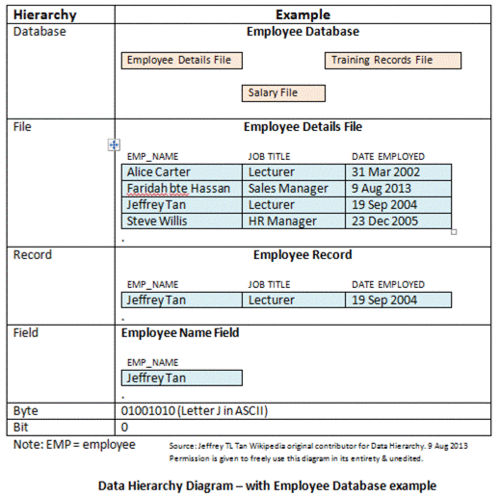An effective information system provides users with accurate, timely, and relevant information system.
Accurate = free of errors.
Timely = when it is available to decision makers when it is needed.
Relevant = when it is useful and appropriate for the types of work and decision that require it.
File Organization Terms and Concepts
Data redundancy = the presence of duplicate data in multiple data files so that the same data are stored in more than one place or location.
Data inconsistency = the same attribute may have different values.
Database Management System (DBMS)
Database = a collection of data organized to serve many applications efficiently by centralizing the data and controlling redundant data.
Database management system (DBMS) = software that permits an organization to centralize data, manage them efficiently, and provide access to the stored data by application programs.
Advantages of Database Management Systems (DBMS)
- Easy to sort
- Easy to ask repetitive questions (called a query)
- Provides formatted input screens to prevent errors (called forms)
- Can produce formatted output (called reports)
- Reduces data redundancy (less duplication of data)
- Increases data integrity (data is valid more then in a spreadsheet)
Relational databases = represent data as two-dimensional tables.
Tables may be referred to as files. Each table contains data on an entity and its attributes. MySQL is a popular open source DBMS, and Oracle Database Lite is a DBMS for mobile computing devices.
 |
| The Three Basic Operations Of A Relational DBMS |
Capabilities of Database Management System
Data definition = to specify the structure of the content of the database
Data dictionary = an automated or manual file that stores definitions of data elements and their characteristics




0 comments on "Foundations of Business Intelligence : Databases and Information Management "
Post a Comment